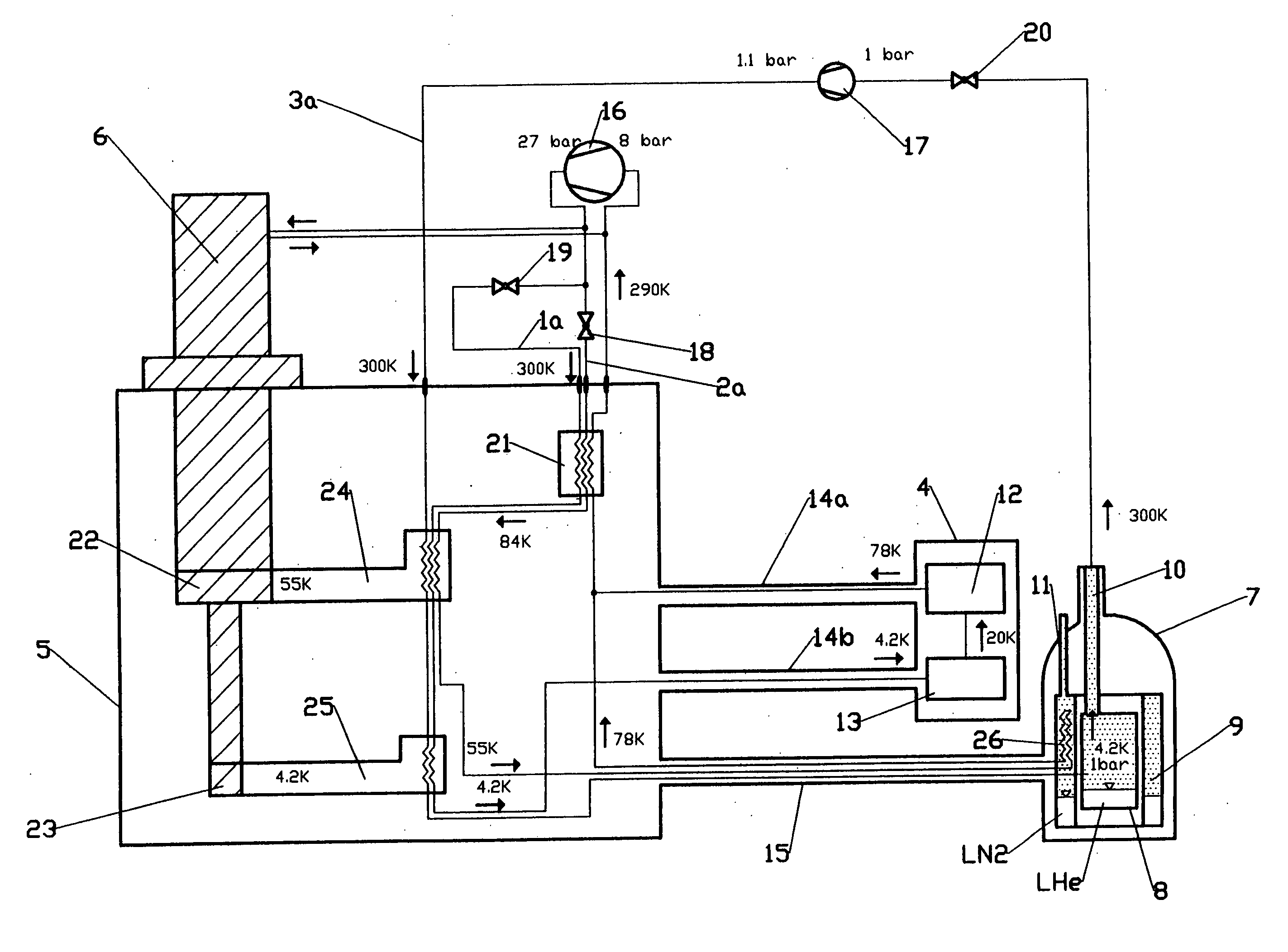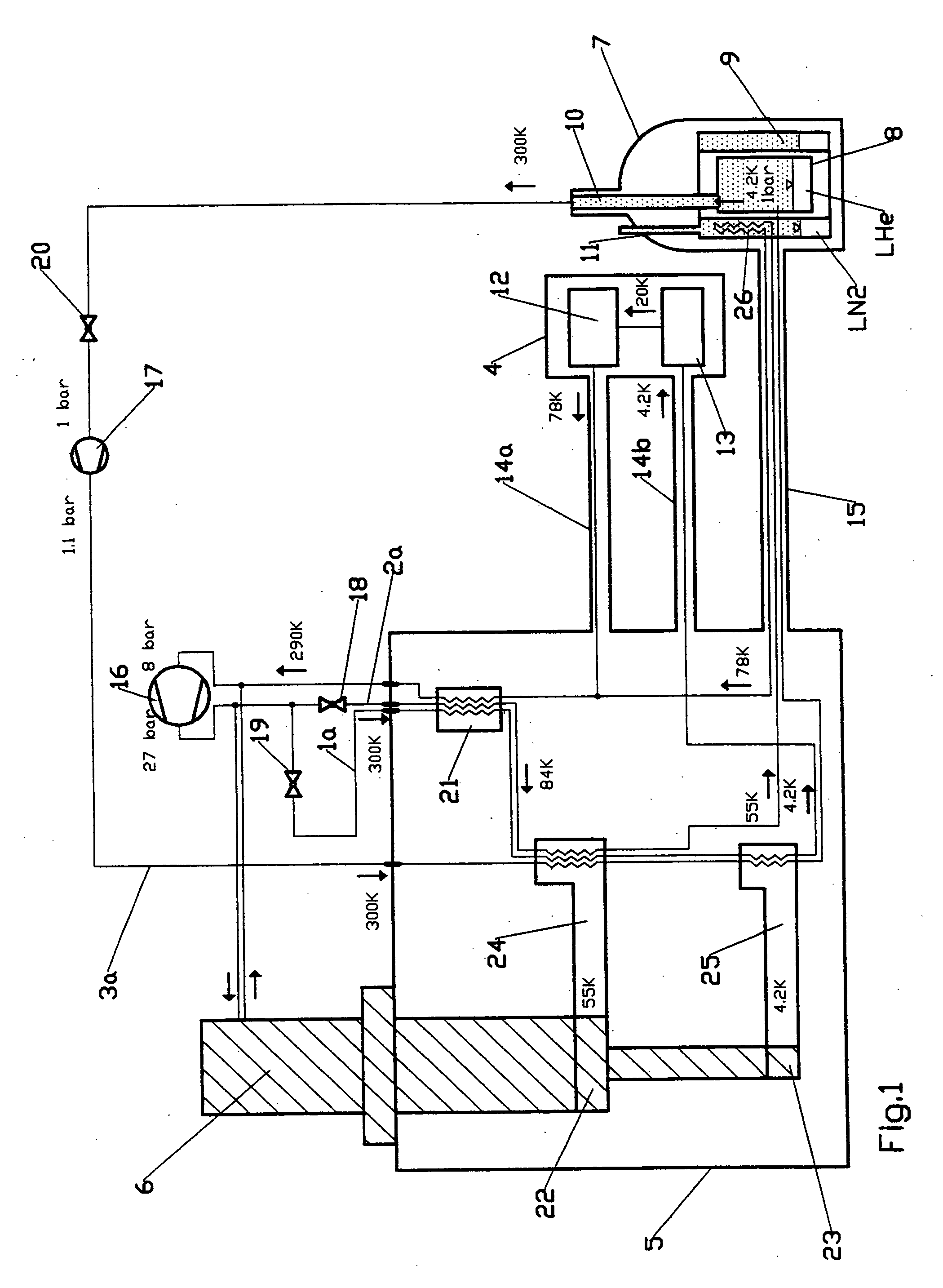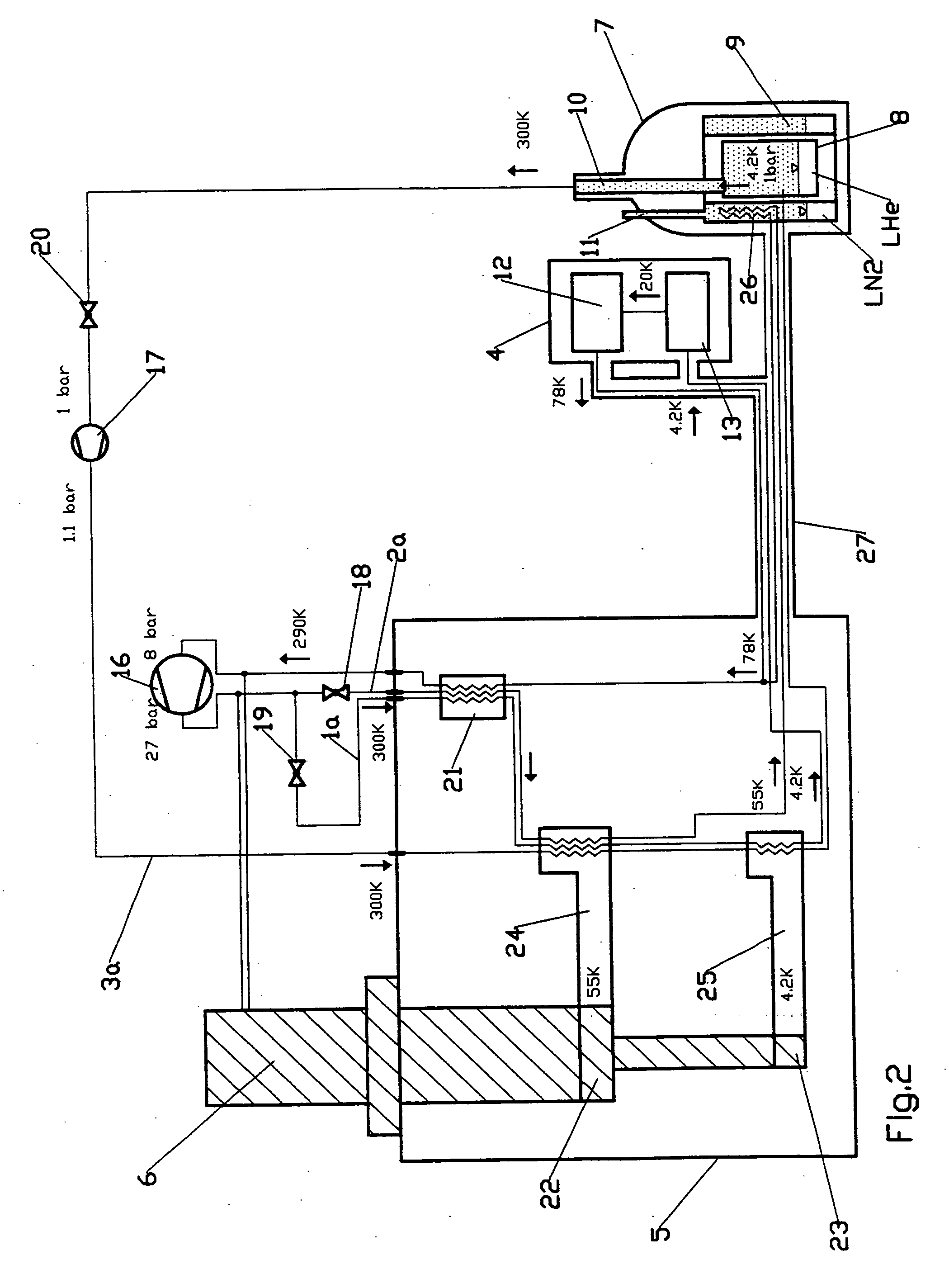NMR spectrometer with a common refrigerator for cooling an NMR probe head and cryostat
- Summary
- Abstract
- Description
- Claims
- Application Information
AI Technical Summary
Benefits of technology
Problems solved by technology
Method used
Image
Examples
Embodiment Construction
[0031] The figures explained below show different embodiments of the inventive NMR spectrometer with associated cooling circuits 1a, 1b, 1c, 1d, 2a, 2b, 3a, 3b. The NMR spectrometer also comprises a cryostat, an NMR probe head 4 and a cold head 6 of a refrigerator which is preferably designed as a pulse tube cooler and disposed in a separate evacuated and thermally insulated housing 5 to prevent thermal input through convection and gas heat conduction. The drawings do not show the insulation from thermal radiation.
[0032] The essential components of the cryostat are an outer shell 7 and a helium tank 8 which contains a superconducting magnet and liquid helium (4.2 K), a nitrogen tank 9 which contains liquid nitrogen and one or more neck tubes 10 which connect the helium tank 8 to the outer shell 7. The nitrogen tank 9 also comprises one or more neck tubes 11 of this type.
[0033] The NMR probe head 4 contains the resonator 13 and the pre-amplifier 12. Each coolant is transported thro...
PUM
 Login to View More
Login to View More Abstract
Description
Claims
Application Information
 Login to View More
Login to View More - R&D
- Intellectual Property
- Life Sciences
- Materials
- Tech Scout
- Unparalleled Data Quality
- Higher Quality Content
- 60% Fewer Hallucinations
Browse by: Latest US Patents, China's latest patents, Technical Efficacy Thesaurus, Application Domain, Technology Topic, Popular Technical Reports.
© 2025 PatSnap. All rights reserved.Legal|Privacy policy|Modern Slavery Act Transparency Statement|Sitemap|About US| Contact US: help@patsnap.com



